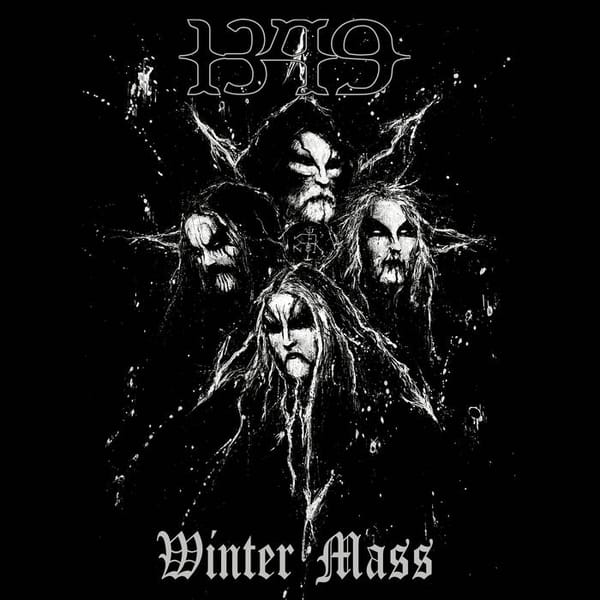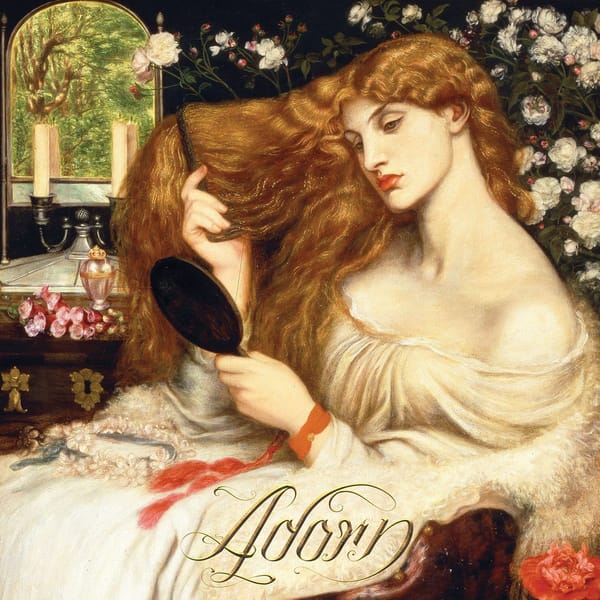From The Vault: Celtic Frost - To Mega Therion
Talvi goes way back in time, dissecting the legendary debut of one of the true pioneers of black and extreme metal, Celtic Frost.
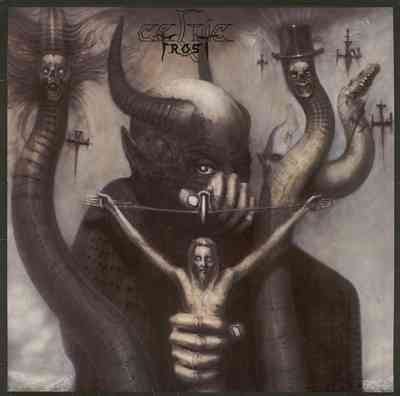
Celtic Frost evokes pulp monsters and Gothic landscapes without sacrificing compositional structure on this classic album.
Introduction
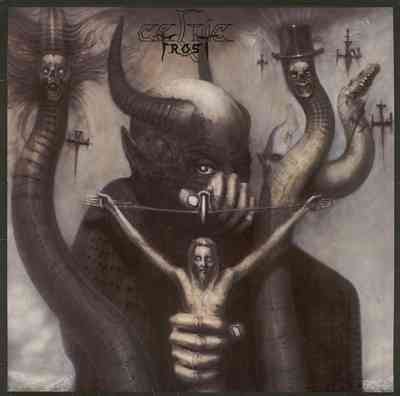
Looking at this album, you are greeted with the gaze of a horned creature using Jesus Christ as a slingshot. This is Satan I by the legendary Swiss artist H.R. Giger, known for his mix of surrealism, eroticism, and horror. Arguably one of the most influential visual artists of the 20th century, Giger reached his peak in relevance after designing the Xenomorph for Alien, but he also has a long history of collaborating with music artists. The story goes that Tom Warrior and Martin Ain were fans of Giger’s Necronomicon book, a collection of his art published in 1977, and treated it like their personal Bible. They fell in love with Satan I and wrote a letter to Giger, asking if they could use it. Giger agreed to give the painting to the band for free on the condition that they also include his unpublished art piece Victory III. In retrospect, it’s hard to imagine a more fitting cover art for this album than Satan I.
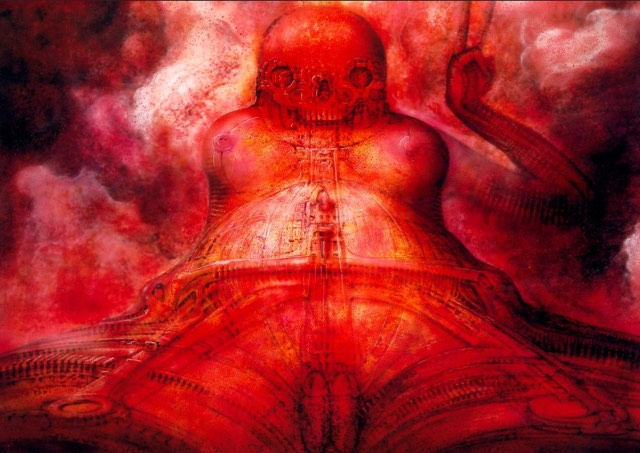
The title To Mega Therion is another reference to Satan, meaning “the Great Beast” in Greek. The term is coined by occultist Aleister Crowley, founder of the Thelemic religion, who proclaimed himself the great Beast after taking part in a ritual while high off his mind. In Greek isopsephy, To Mega Therion translates to 666. The beast is said to emerge from the sea, marking the coming of the apocalypse according to the Book of Revelation. To Mega Therion is littered with references to the Armageddon and Satan, but they are often more subtle than on many subsequent black metal releases, where the satanism can get downright comical.
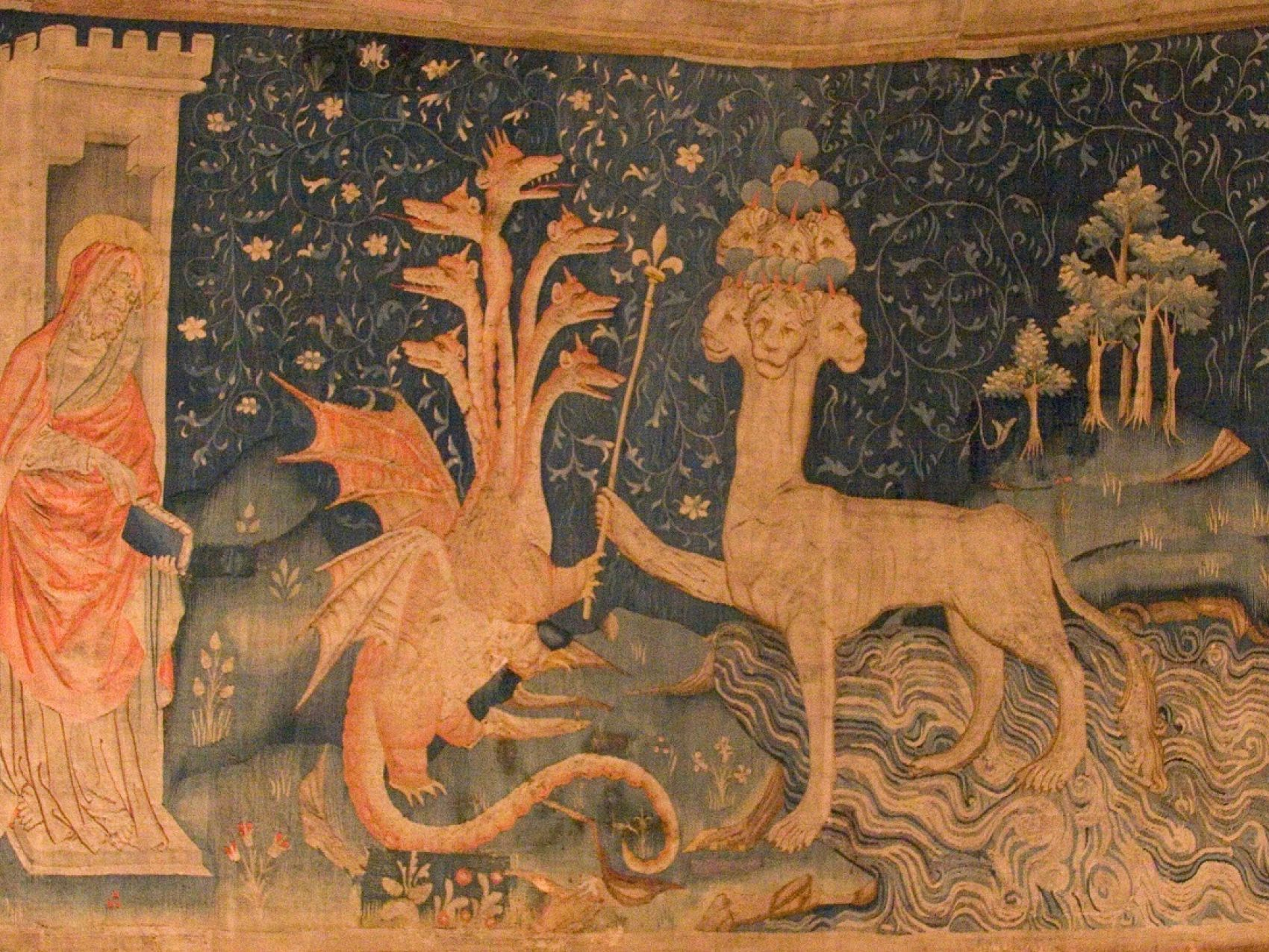
Categorizing this album has always been a challenge. To start off, is this album even black metal? Does it matter? There are elements of thrash, doom, even death metal, and yes, black metal too. The impact of this album can be felt in Morbid Angel and Darkthrone, in Godflesh and Type O Negative. What can't be denied is that this album has its place in the extreme metal canon.
When talking about the historical impact, it's important to know the context of this album. And not just the musical context, but the geographical: while the US was entering an era of relative metal mainstream relevance and the Florida death metal scene was in its infancy, European metal ecosystem was still mostly focused on heavy metal and speed metal. This was the case in Switzerland too when Celtic Frost’s story began with Hellhammer, founded in 1982. The band immediately established their own unique style of minimalist and noisy metal on demos like Satanic Rites (1983). The band changed name and line-ups and by the time it was recording To Mega Therion, the number of Swiss metal bands had grown at least three-fold according to Metal Archives: there was Coroner playing technical thrash, Excruciation with a mix of thrash and proto-death, and the death metal group Messiah who I recommend checking out as well. Elsewhere in Europe you had Bathory and the Teutonic wave of thrash metal (which many include in the conversation for the first extreme metal bands, but in my humble opinion, even Bathory was playing a variation of speed metal until finding its own style on 1985’s Return of Darkness and Evil). But nothing really sounded like Celtic Frost.
While the rest of the metal world was moving towards faster guitars and lower octaves, Celtic Frost took a left turn: they stripped down their instrumentals, particularly the drumming, and turned down their tempo. While Celtic Frost/Hellhammer had never exactly been a speed beast, their debut Morbid Tales still had plenty of Motörhead-esque fast paced parts, for example on Into the Crypts of Rays and Nocturnal Fear. And while I love this side of the band too, it’s clear to me that Celtic Frost’s strength doesn’t lie in the speed and technicality – there were already bands who could beat them in those fields – but rather in their command of melody and tonality. Thanks to that realization, To Mega Therion sees a band fine-tune their craft by focusing on their competitive advantage. The end-product is a mature record that can stand on its own even outside the historical context.
Tonality and riff structure
Let it be noted that the specific note selection isn’t exactly important to understand, as these songs probably came about as outbursts of unpolished creativity, not as conscious exercises in music theory. But it’s worth looking at it briefly to see how different the band was from its contemporaries and in a technical sense, what exactly gave the riffs their unique, dark sound (rather than just calling something “dark”, since that can mean anything in music).
Celtic Frost writes a riff by establishing a tonality and then immediately escaping it with a variation (this riff style can later be found all over Burzum’s debut among others). It’s expectation and subversion in the same sentence. Great example of this is the second riff of The Usurper, where the band plays a simple 1-2-1-3 power chord sequence, but the 2-chord is moved up a semitone on the second repeat, establishing a mood of uncertainty. Unlike their contemporaries who still may have used chromaticism in the form of bluesy licks or descending bridges (think For Whom The Bell Tolls), Celtic Frost stresses the variated notes with phrasing, letting them ring at the end of a note sequence and occupy an equal place with the consonant notes. Here the slower tempo allows the listener to focus on the ugliness and weirdness of the melodies. Furthermore, while the music is dissonant, there are clear tonal centres where the riffs are allowed to resolve. This is vital for keeping the songs memorable and not too jarring. In terms of pure dissonance, I don’t think any metal band reached the level that Celtic Frost was at until the Tampa scene really took off in the late 80s. In addition to the familial minor seconds and tritones, which were already common in Bay area thrash, Warrior uses major scale notes to add to the alienness of the music. This happens from example at 0:48 and 1:48 in The Usurper when Warrior raises the root from E to F#, and at 0:43 in Jewel Throne. Major notes were rare in speed metal that used minor blues as its tonal backbone but would become more and more common in dissonant metal later with bands like Immolation.

The fourth song, Dawn of Meddigo is the high point of the album, with its linear structure and epic atmosphere. Right from the opening this song stands out with a melody that climbs and descends simultaneously. This is probably the most prophetic song for the black metal genre due to its open notes that creep in the air, hinting at the coming second wave of black metal. The song continues with another expectation-subversion riff as I called them earlier, establishing verse and chorus, until it climaxes with a doomy horn section using a melody so weird that you won’t hear anything similar anywhere else (in case you’re interested, the melody goes F#---A-Bb-G-G#---- and the reason it works, I believe, is that the G-note should resolve back down to F#, but as it’s a semitone apart from G#, it can naturally resolve up as well, again borrowing from a major scale – I promise that’s enough theory for one review). The song then transitions into a headbanging, almost NWOBHM style riff. Around the four-minute mark the intro riff returns, which I appreciate, and the song finishes with the repetition of the verse and chorus.
The rest of the songs mostly follows these techniques and tonal rules. The band employs a variety of standard techniques like mid-paced chugging and galloping as well as some tremolo picked power chords reminiscent of Discharge to present bruting, chromatic melodies. There are doomier parts like on Circle of the Tyrants – the electric guitar hadn’t sounded this heavy since Tony Iommi - and some thrash metal such as the second half of Jewel Throne. There’s also the ambient song Tears in a Prophet's Dream, which adds to the atmosphere and offers a breathing stop before the closing track, Necromantical Screams, which sees the band put all their tricks into one epic six-minute song. The riff style is quite monolithic throughout the album, and if you're not paying attention to the tonal nuance, it's easy to miss out on what makes them interesting. Guitar solos mostly stick to a Kerry King -style noisy shredding to create a contrast with the otherwise murky but precisely played instrumentals.
Nature of Man
"Part god, part man, if I walked by their side."
(Beyond the) North Winds
The nature of man has always kept philosophers occupied. Mythology is filled with half-man, half-animal hybrids and demigods. According to Aristotle, a man who resides outside the comfort of social structures is either a beast or a God. It is widely agreed that metal music marks a rejection of the social (universally appealing metal doesn’t truly exist) and embraces the liberation of the aristocratic individual through strength and conviction. In metal henceforth, man is both a beast and a God.
Modernism has added a third pillar to this building: the machine. There is the Maschinenmensch of Metropolis, Terminator (1984) and the replicant of Blade Runner (1982). Humanity is losing its essence to a new opponent, but this time not to the wild and untamed beast of nature, but the cold and logical structure of technology.
Celtic Frost is entertained by this trinity at least on a subconscious level. The intro to their debut LP Morbid Tales, aptly titled Human, consists of bestial screams, distorted by audio technology. On their comeback album Monotheist there is a song titled A Dying God Coming into Human Flesh. On To Mega Therion, as in Gieger’s art, these three forces collide to create a picture of dystopian humanity: a mix of occult lyricism and triumphant orchestration, of animalistic riffing and grunting, backed by the metallic sound of the electric guitars and occasional industrial noise.
Vocally, Tom Warrior can preach with the conviction of an end-times' prophet and roar with the fury of a primal animal. He mixes Sturm and Drang dramatism and punk nihilism while guiding the listener through the fantasy wasteland of the album. The lyrics paint picture of a dystopian, war-torn land under a dying sun where humans, titans and gods battle for the right to rule over their despotic realm. Aesthetically they seem almost close to NWOBHM lyrics, only there are no heroes or honour. Rather than glory, battles lead to massacre and burning bodies, necessary sacrifices on the way to power, only deemed pointless once another conqueror inevitably arises to overthrow the previous one. The lyrics have certainly aged better than many extreme metal lyrics from this time, being neither too edgy nor cheesy. Humanity’s soul and whether it is worth redeeming remains the central question.
Conclusion
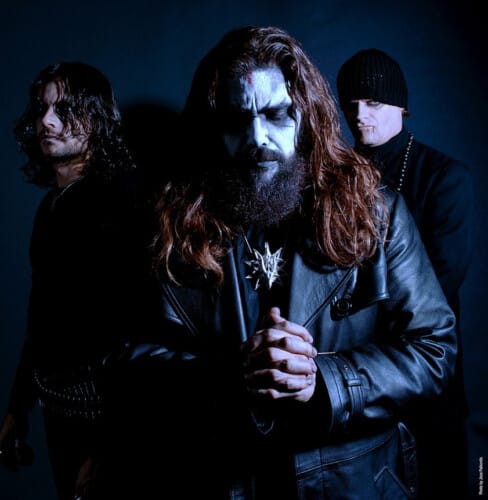
After 40 years, I genuinely think this is still one of the heaviest pieces of music ever made, and it doesn't achieve this heaviness with aesthetics, gimmicks, shock-value or dead-end maximalism (more noise, more speed, more notes, ever lower octaves; it’s amazing to realise that the whole album is in standard tuning) but rather with an authentic feeling of doom and nihilism. To me this album, together with Hell Awaits, is solidified as the foundation of not just black but death metal too.
Perhaps the only real downside of the album is that it can get overwhelming with its doom and gloom - and I would argue that only speaks to the success of the music. The band already achieves its goal with just the first couple of songs - the rest of the 40 minutes is simply enhancing and deepening the experience. To Mega Therion predicts the coming decade of gothic and extreme metal while carrying a sound that holds up after dozens of replications.
BMZ rating: 10/10

[embedyt] https://www.youtube.com/watch?v=c-mZ3--_wBQ[/embedyt]
Your Thoughts On This Classic?
If you haven’t listened to this classic already, make sure to do and then please feel free to share your opinion. Is it even black metal, where do you rank it among the classiss? You can discuss it all with us on our social media channels, or join us on discord, where we share and talk abot all things black metal! Make sure to follow our Facebook page, Black Metal Zine, to receive notifications when we publish articles. Also check out our Instagram at @blackmetal.zine for concert pictures and more!
